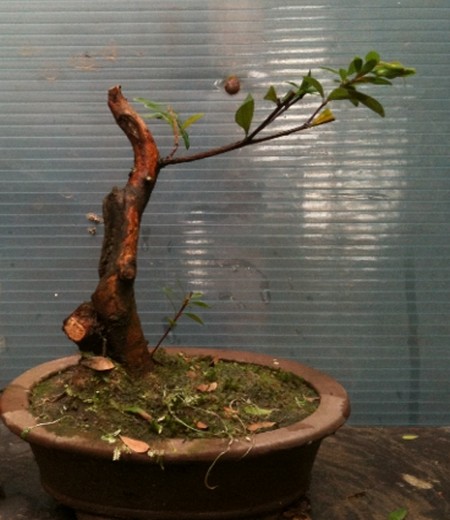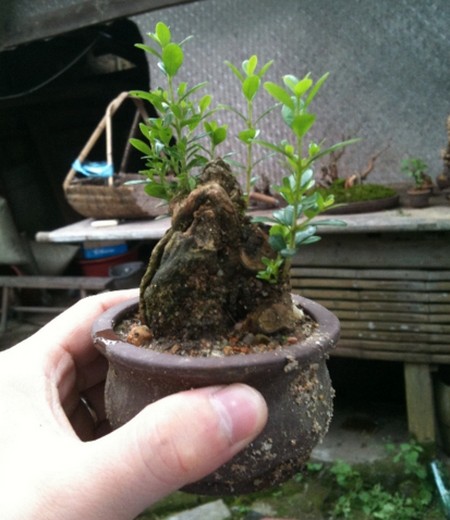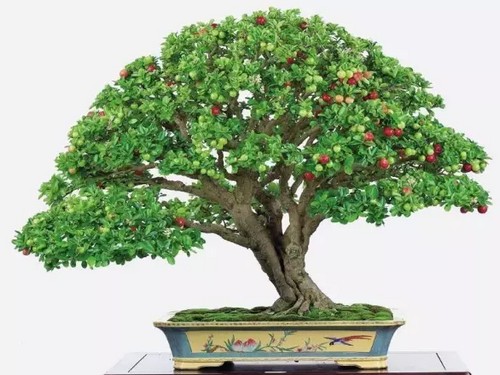The material of Chinan bonsai creation
Cunninghamia lanceolata is a wild evergreen shrub in the mountains of the south of the Yangtze River, which is rarely cultivated artificially. According to its ecological habits and biological characteristics, sowing and cutting propagation can be carried out. But to make bonsai, wild plants or old piles are often used. Mountain mining: in the mountains and hills of the south of the Yangtze River, you can choose the old piles that have been cut down for many years and are old and clumsy.

During the excavation from March to April in spring, pay attention to the preservation of lateral roots and fibrous roots. It is a long way back from the mountains, so it is necessary to beat good mud and wrap it with wet moss or straw to reduce water evaporation and facilitate survival. After digging back, choose loose, moist, well-drained sandy loam to cultivate, prune once before planting, cut too dense branches, in order to survive. After planting, you should set up a shed in time for shade, often water, keep the soil moist, and spray foliar water 2-3 times a day in summer. The shade canopy can be removed after October to give light. The shape can be processed in the pot after the ground planting has been maintained for one year.
The wood produced by bonsai is mainly obtained by the following three methods.
1. Sow and reproduce. When the seeds are fully mature from November to December, they are collected and sown in loose, fertile, well-drained sandy soil (tidal sand) or rotten leaf soil. After emergence, it began to take soil and transplant in the nursery in October of the third year, and it could not be cultivated in the pot until 6 years after sowing. If you sow and breed, it will take at least more than 10 years to cultivate the elegant bonsai.
2. Market purchase. Choose the red nan stump with fresh skin color, fresh incision, no dehydration and dry skin, complete main root, lateral root and fibrous root, and slightly soil mass. Red Nan stumps without soil masses should be soaked in water for one day after purchase and planted to improve the survival rate and germination rate.
3. Mountain mining. From the mountains or river banks to dig Qiu qu old, simple and beautiful red Nan tree stump, processing and training into bonsai. This method takes faster time than sowing, reproduction and formation, and is easier to survive than market purchase.
① mining time: in principle, the dormant period (October to December) is suitable for mining. However, considering the climatic characteristics and the environmental factors and management which are beneficial to the survival of the tree stump, it is suggested that the mining should be carried out from the end of January to the first ten days of May to avoid the cold season and dry weather as far as possible.
② mining method: first of all, the red nan tree stump must be carefully selected, with the trunk thick and Qiu qu old, the root neck inflated strangely and rising out of the soil, or eaten by termites to form half of the empty. According to the shape of the stump and the requirements of the modeling style to be cultivated, the trunk and most of the branches were preliminarily cut, and then according to the strike distribution of the root system, the pick position was decided, the main root was cut first, and then the lateral root was broken, while digging and shaking, and then the bare root was dug out.
If possible, the tree stump should be excavated with soil or taken out year by year. In the first year, cut off the main root and part of the lateral root, and then fill the soil to make it sprout fibrous root; in the second year, dig up the remaining 1x2, cut off the rest of the lateral root, dig up the whole plant, this method has a very high survival rate, after the stump is dug out, quickly trim and smooth the fracture of the root, then dip it in mud, wrap it tightly with wet straw, moss or cloth, to ensure that the part does not lose water, and transport it back to planting as soon as possible.
Time: 2019-05-26 Click:
- Prev

The method of making bonsai of Chinan
Cunninghamia lanceolata is a kind of tree species that needs to be maintained by big fat and water, and the germination period is less than 2 months. There are many conservation items that need to be paid attention to, but it is not difficult to understand and get started, so it is very suitable for novice breeding. The plant type of Photinia chinensis has unique ornamental value.
- Next

The method of making cherry bonsai
Potted cherries are miniaturized cherry orchards. It can not only enjoy the beautiful scenery full of flowers and fruits, but also have good fruit at the same time. In recent years, with the improvement of potted technology, it is gradually stepping into the balcony and courtyard of thousands of families. Potted cherries blossom in spring, mature fruit in early summer and beautiful flowers.
Related
- Fuxing push coffee new agricultural production and marketing class: lack of small-scale processing plants
- Jujube rice field leisure farm deep ploughing Yilan for five years to create a space for organic food and play
- Nongyu Farm-A trial of organic papaya for brave women with advanced technology
- Four points for attention in the prevention and control of diseases and insect pests of edible fungi
- How to add nutrient solution to Edible Fungi
- Is there any good way to control edible fungus mites?
- Open Inoculation Technology of Edible Fungi
- Is there any clever way to use fertilizer for edible fungus in winter?
- What agents are used to kill the pathogens of edible fungi in the mushroom shed?
- Rapid drying of Edible Fungi

